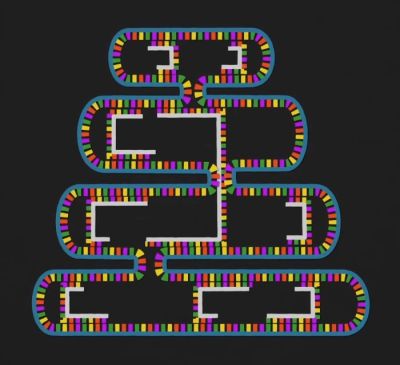Mechanical actions underlie much of what makes modern day society function, whether it’s electric motors, combustion engines, switches, levers, or the springs inside a toy blaster gun that propel foam darts at unsuspecting siblings. Yet as useful as it would be to scale such mechanisms down to microscopic levels, this comes with previously minor issues on a macroscopic factors, such as friction and mechanical strength, becoming quickly insurmountable. Or to put in more simple terms, how to make a functioning toy blaster gun small enough to be handled by ants? This is the topic which [Mark Rober] explores in a recent video.
The answer is to use a single structure that comprises not only the frame of the blaster, but also the spring mechanism that stores the mechanical energy and the trigger mechanism. This is referred to as a compliant mechanism (CM), and [Mark] collaborated with Brigham Young University (BYU) and its Compliant Mechanism Research group in order to design a suitable CM for an ant-sized blaster gun. After a few design iterations a version was created that’s also been released on Thingiverse as STL files.

Naturally, this version can be created fairly easily by anyone who has access to an FDM or SLA 3D printer, but where things get interesting is when the model gets scaled down further and created out of carbon nanotubes (CNTs). This CNT version is pictured in the image at the top, and can only be manipulated using precision instruments as shaky mammalian hands would utterly destroy it. Even so, if used correctly, it can still shoot a projectile just like its much larger brethren.
Upping the ante even further is the self-assembling version out of DNA. For this scanning tunneling microscope-sized version of the outline of the blaster, [Mark] went to the Salk Institute for Biological Studies. Named after the famous Jonas Salk, this institute is at the forefront of biomedicine, following in the footsteps of Dr. Salk.
Here is where Salk Institute researchers demonstrated a technique where one side of a DNA chain can be selectively supported with supports that are coated with matching ACGT molecules. When added together in a solution, these will self-assemble into a structure that does absolutely not match the famous DNA helix shape, but can instead be used to create structures at will, possibly even compliant mechanisms that can one day be used in medical science.
Although it’s hard to say when our T-cells will be using molecule-sized blaster guns to take out threats, or medicine delivered with tiny darts from nanobots, there’s a good chance that some form of compliant mechanism will be involved.

